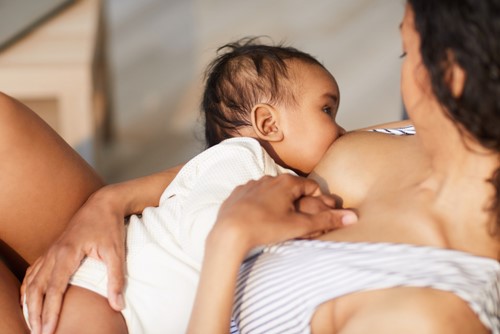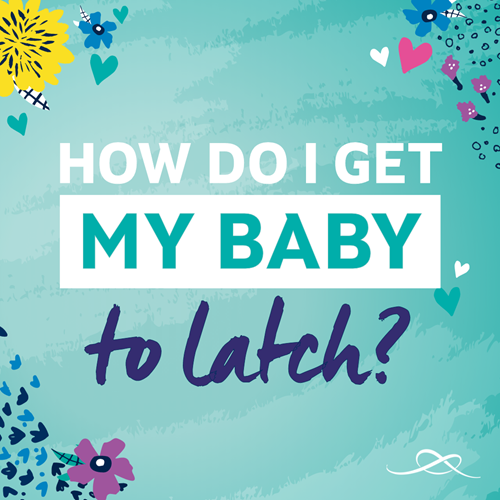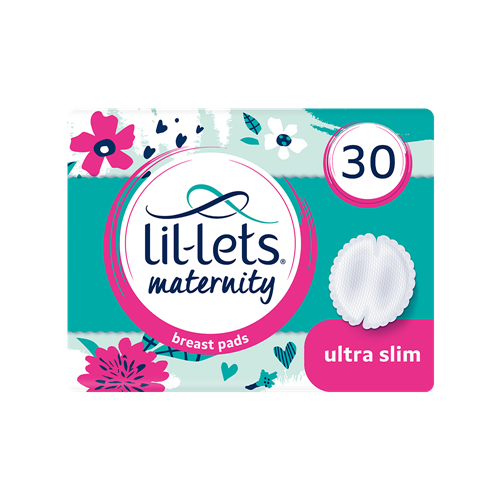What to expect in those early days of breastfeeding, so you can feel confident and most importantly prepared. You’ve got this Mama!
Breastfeeding your baby can be both a unique and wonderful experience. Some mums and babies take to breastfeeding quickly and effortlessly, for others it is not such plain sailing, so you’re not alone if you’re finding it tricky.
Just like you can’t ride a bike without a bike to ride, you can’t really learn to breastfeed until you’ve had a baby and your breasts start to produce milk! So don’t be hard on yourself if at first breastfeeding feels like an impossible undertaking – and trust us, with plenty of practice almost everyone gets the hang of it.
To help get you started we’ve summed-up what to expect in those early days of breastfeeding, so you can feel confident and most importantly prepared. You’ve got this Mama!
Colostrum is the amazing liquid your breasts produce in the first few days after birth. It's thick and usually a golden yellow colour. Colostrum is great for your baby’s immunity as well as being rich in nutrients. It's a very concentrated food, so your baby will only need a small amount, about a teaspoonful, at each feed. (yes, that’s really all they need!) After the first few days your breasts will start to produce “mature” milk and the one you are most likely more familiar with.
Newborn babies will breastfeed A LOT. As a rough guide, a newborn will feed every 1 to 3 hours (so around 8 to 12 times in a 24-hour period!) Breastfeeding frequently in the early days, with plenty of skin-to-skin contact, helps to not only build your milk supply, but it can also reinforce that special bond between you and your baby.
Don’t worry if you feel like you’re nursing all the time, your baby won’t feed this frequently forever – we promise! As they grow, breastfeeds will become less often. It’s ok to feed your baby when they show signs of hunger, if your breasts feel full or they just need a little extra comfort – you can’t over feed a breast-fed baby (and they will love the cuddles just as much as you!)
There is no set amount of time each feed should last for and not every feed will be the same length. Simply be guided by your baby and let them suckle for as long, and as they want to. We know this might feel hard in the early days – especially when you’re up all night too – but see it as an opportunity to cozy up on the sofa, binge watch something on TV and have lots of lovely bonding time with your new baby.
There’s no need to time feeds (unless you really want to). Continue to breastfeed until your baby is ready to stop. Sometimes they may take a pause for a minute or two and then restart again. This is completely normal. If your newborn baby is quite sleepy, they may fall asleep quickly after starting to breastfeed – that’s thanks to that lovely relaxing hormone, oxytocin. If this happens, try gently waking them up or re-latching them to encourage them to feed for a little longer.

Crying isn’t the only sign that your baby is hungry. If you can recognise the other cues your baby displays when letting you know they’re hungry (or hangry!) this can make it a little less urgent and stressful for you both.
Signs your baby is hungry include:
The more you get to know your baby, the more you’ll understand their feeding cues and when it’s time to breastfeed!
Wish your breasts came with an inbuilt measuring guide!? Unfortunately, when breastfeeding you won’t be able to tell exactly how much milk your baby has taken during each feed – and trust us that’s ok, you don’t need to know!
Fortunately, there are a few things you can monitor to determine if your baby is getting enough milk. If your baby is gaining weight and seems settled and alert between feeds, these are great signs that they are getting plenty of milk.
You can also tell if your baby is having enough milk by keeping a close eye on what is in their nappies…who knew pee and poop was so useful!? Lots of wet nappies indicates that your baby is hydrated, and the colour and consistency of any poo will signify if they are getting enough calories.
Over the first few days you should see your baby’s poo change from black and tarry to green poop and then to yellow, seedy, loose poo. If this happens and your baby is having plenty of wet and dirty nappies by days 4 to 6, you’ll know your baby is getting enough milk from the breast.
Try to do one feed from one breast, so that your baby gets both the foremilk and the hindmilk (comes at the end of the feed and is higher in fat). If it seems like your baby is still hungry though, switch breasts and continue to breastfeed until they are full. If you don’t switch, remember to start with the other breast when you next start to feed. Some mums use a hair bobble, bracelet or wristband to remind them which side they fed on last!
Getting your baby to latch takes practise so don’t panic if it doesn’t happen straight away.
First get into a comfortable position and remember all the “N’s” – nose to nipple - hold your baby's whole body close with their nose level with your nipple. Then, let your baby’s head tip back a little, so their nose brushes against your nipple. This should encourage them to open their mouth wide and then their chin should touch your breast first, with their head still tipped back so their tongue can reach as much breast as possible. To check if you have a good latch, you should see much more of the darker nipple skin above your baby's top lip than below their bottom lip. Your baby's cheeks will also look full and rounded as they feed.
How to get a good latch when breastfeeding
Ouch! Sore nipples are quite common, particularly in the early days of breastfeeding. Rest assured this should ease as your body gets used to nursing on a regular basis. Sore or cracked nipples can also be a sign of a poor latch, so get some extra help with this if you feel you need it. In the meantime, try using a nipple cream to help soothe your sore nipples and help them to heal.

It’s completely normal for your breasts to leak during the early days of breastfeeding as your breasts are getting used to how much milk they need to produce. To protect your clothes from leaks, pop some breast pads in your bra – as your milk supply regulates any leaks should become few and far between – phew!
Lil-Lets Maternity Breast Pads Lil-Lets Maternity Intimate WipesBreastfeeding is often a journey and doesn’t come naturally to everyone. If you are struggling or simply want some extra reassurances don’t hesitate to reach out and ask for help. In the early days your midwife or local infant feeding team will be able to support you. They may point you to other local groups you can attend that will help you with breastfeeding too. You can also contact these national organisations for further support:
National Breastfeeding helpline: National Breastfeeding Helpline – Helpline
Breastfeeding network: The Breastfeeding Network | Independent Breastfeeding Support
La Leche League: La Leche League GB - Friendly breastfeeding support from pregnancy onwards
Association of breastfeeding mothers: Home - ABM
A balanced diet rich in fruits, vegetables, whole grains, proteins, and healthy fats is ideal. Stay hydrated by drinking plenty of water. Certain foods, like caffeine and alcohol, should be limited. Some babies may react to specific foods in your diet, so monitor for any signs of food sensitivity.
Yes, you can usually continue to breastfeed if you have a common illness like a cold or the flu. Breastfeeding can pass antibodies to your baby, providing them with additional protection against the illness. Always consult your doctor if you have concerns.
It depends on the type of surgery and how it affected your milk ducts and nerves. Many women who have had breast surgery can still breastfeed, but milk supply may be affected. Consult your healthcare provider or a lactation consultant for personalised advice.
Many medications are safe to take while breastfeeding, but some are not. Always consult your healthcare provider before taking any new medication, including over-the-counter drugs and herbal supplements.